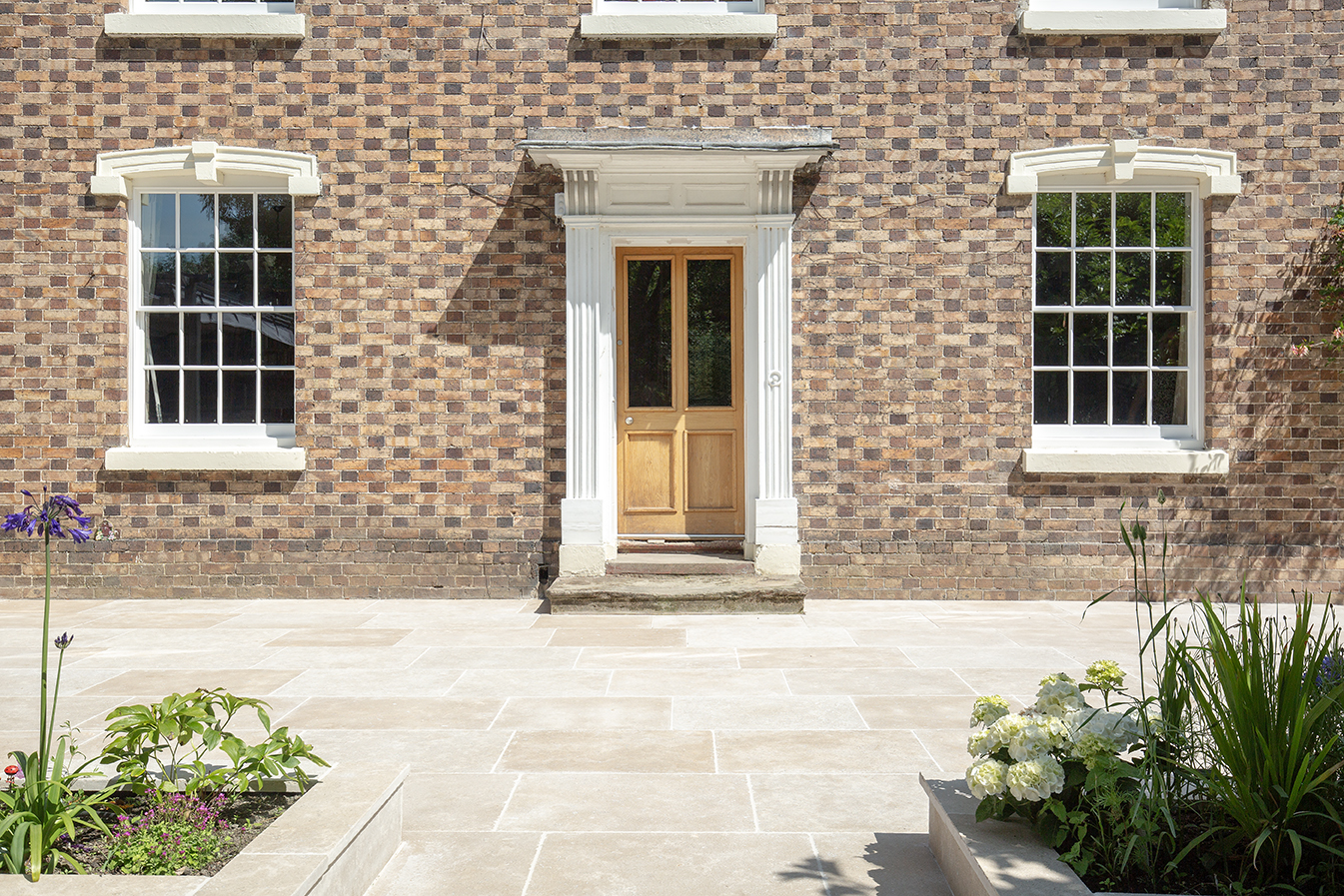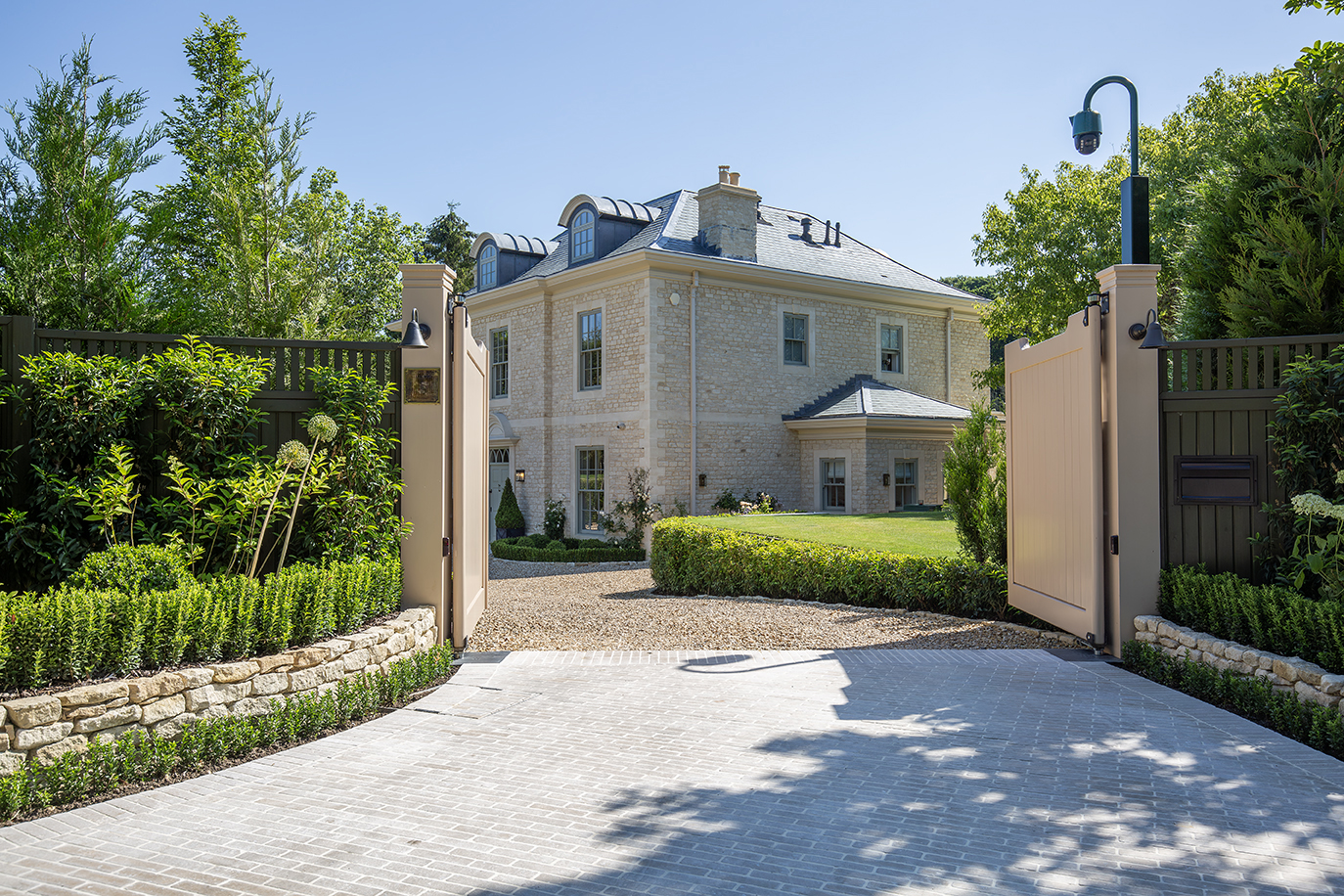Limestone and other natural stones have always been a popular and everlasting option for outdoor areas, with its combination of a classic appearance and durability. Dijon limestone is one of the most timeless and long-lasting types of natural stone, however a question people may have is ‘what is the best type of Dijon limestone for outdoor paving?’.
This post will cover the different characteristics of Dijon limestone to consider when utilising it for your outdoor project, as well as what options are on offer so that you are fully informed and can select the right type of outdoor Dijon limestone for you.

What makes Dijon limestone perfect for outdoor paving?
Dijon limestone has a particularly dense nature compared to softer types of natural stone, and therefore it fairs very well as outdoor paving and can last for countless years if well cared for. The high strength of the pavers in 20 and 30mm thicknesses mean that they can be laid using tried and tested beds such as compacted hardcore, rather than having to use a concrete base.
This strength and density also mean the surface of Dijon limestone holds up well to knocks from things such as outdoor furniture or dropped garden tools. Dijon limestone paving is also frost resistant so you will not have to worry about colder temperatures.

What size and format should I choose?
Depending on the size and shape of your outdoor area, you may want to consider different sizes and layouts of Dijon limestone, or even a mixture of several to fit separate areas or to create interest within your outdoor space. One of the many upsides to Dijon limestone as outdoor paving, is the availability of many different sizes and formats on offer.
For example, if you have a large expanse of patio space, you may want to opt for some of the large free length format Dijon tiles. This will give a classic, natural look to your project, and will keep grout lines to a minimum.

Alternatively, you may have a smaller or more intricately shaped patio area, in which you could utilise a smaller size of Dijon limestone. In this particular project using Dijon Tumbled limestone, the customer has used a free length Dijon paver, combined with the versatile Dijon Tumbled cobbles, to create a beautiful mixture of different formats within the same space.
These free length cobbles are also perfect to use for paths, or as an edging stone for your main patio.

Why not also consider the brick cobble format, which can be laid either as a herringbone design, or as various other layouts such as basketweave or a traditional brick bond. The 40mm thickness also makes this popular Dijon limestone format suitable for driveways and other vehicular use.

Lastly, Dijon limestone is also often used for steps and copings. These pre-made coping pieces come with a classic bullnosed edge, meaning they require no extra work on site, and are great for use on steps, raised beds, walls, or for around pools.


Which Dijon finish is best for outdoor tiles?
When it comes to finishes, you may have different preferences depending on what sort of style your outdoor project is shaped into. In terms of suitability, all the finishes available for Dijon limestone are suitable for outdoor use – apart from the honed tiles.
The tumbled finish provides a very flexible option for most outdoor areas, whether it be traditional or a space with a modern twist. The edges feature a subtle tumbled appearance, with a fairly smooth yet adequately textured surface which shows natural pitting and fossils.

If your outdoor project is a rustic, traditional country house or cottage, then you will find the seasoned finish of Dijon limestone to suit this look beautifully. This type of Dijon shows a rustic surface finish, bringing more texture as well as a soft, chalky colouring. Another option worth considering for the classic country garden look is Dijon Blend limestone.
This is a second selection of the premium Dijon tumbled limestone, featuring a greater number of natural characteristics, such as colour variation, fossils, pitting, veining, and oxidisation. This gives the Blend selection a charming country feel that complements your property’s character.


How do I maintain my Dijon limestone outdoor tiles?
Keeping your Dijon limestone pavers looking their best is quite a simple task, and one that does not cause as much worry as some people fear with natural stone. Sealing is more a matter of personal preference for outdoor spaces. We do recommend it for areas that see regular food and drink contact, or if you want to keep your Dijon limestone pavers looking as close as possible to brand new for longer.
However, if you are happy for the tiles to weather in more quickly once they have been laid then you can leave them unsealed.
As for the cleaning process, this is nice and straightforward. We advise keeping pressure washing to a minimum – perhaps once or twice a year – and taking care when doing so, by keeping at least half a metre away from the surface to clear any light debris and staining. For more regular cleaning as and when needed, we recommend using a suitable solution for natural stone such as Lithofin Power Clean.
You can also apply an anti-algae solution if you have areas that are surrounded by overhanging branches or shrubbery. Read more about our cleaning and maintenance recommendations with our external natural stone maintenance guide.
Other FAQs
What is the difference between Dijon limestone indoor tiles and Dijon limestone outdoor pavers?
The main difference between these two types of Dijon limestone is the thickness, as when comparing the same finish, the aesthetics and feel of the stone will be the same. Indoor tiles will be 12-15mm in thickness, whereas the Dijon limestone outdoor tiles will be between 20-40mm thick.
What substrate should I use for Dijon limestone outdoor tiles?
The most common type of substrate for outdoor paving is a Type 1 MOT compacted hardcore, with a layer of white sand and cement mortar acting as the adhesive. We then recommend a back coating of SBR slurry on the Dijon pavers or cobbles to help them adhere to the mortar.
Alternatively, if there is a pre-existing concrete substrate, then you can use the same white, flexible adhesive that you would use on Dijon indoor tiles. Both methods are perfectly safe for Dijon limestone when following the recommended processes. For further and more detailed information, read through our substate advice here.
Does Dijon limestone get damaged by rain?
Dijon limestone is a durable and hard-wearing natural stone, making it well-suited for both indoor and outdoor use. While it can absorb a small amount of moisture, rainfall will not damage the stone when it has been properly sealed and installed.
For exterior settings such as patios or paths, sealing is key to protect against water ingress and potential marks from leaves or dirt. Good drainage and regular cleaning also help prevent standing water, which can lead to surface discolouration over time.
With the right preparation and care, Dijon limestone weathers beautifully outdoors, developing a gentle patina that enhances its natural character without compromising performance.
Can I use Dijon limestone on a driveway?
For use on driveways and other areas that see vehicles, we only recommend the 40mm thick brick cobbles, as this is the minimum thickness recommended by British Standards for vehicular use.

–
We hope you found this an invaluable guide as to choosing the best type of Dijon limestone outdoor tiles for your external project, as well as how to install and look after your new Dijon limestone pavers and keep them looking their best for years to come.

